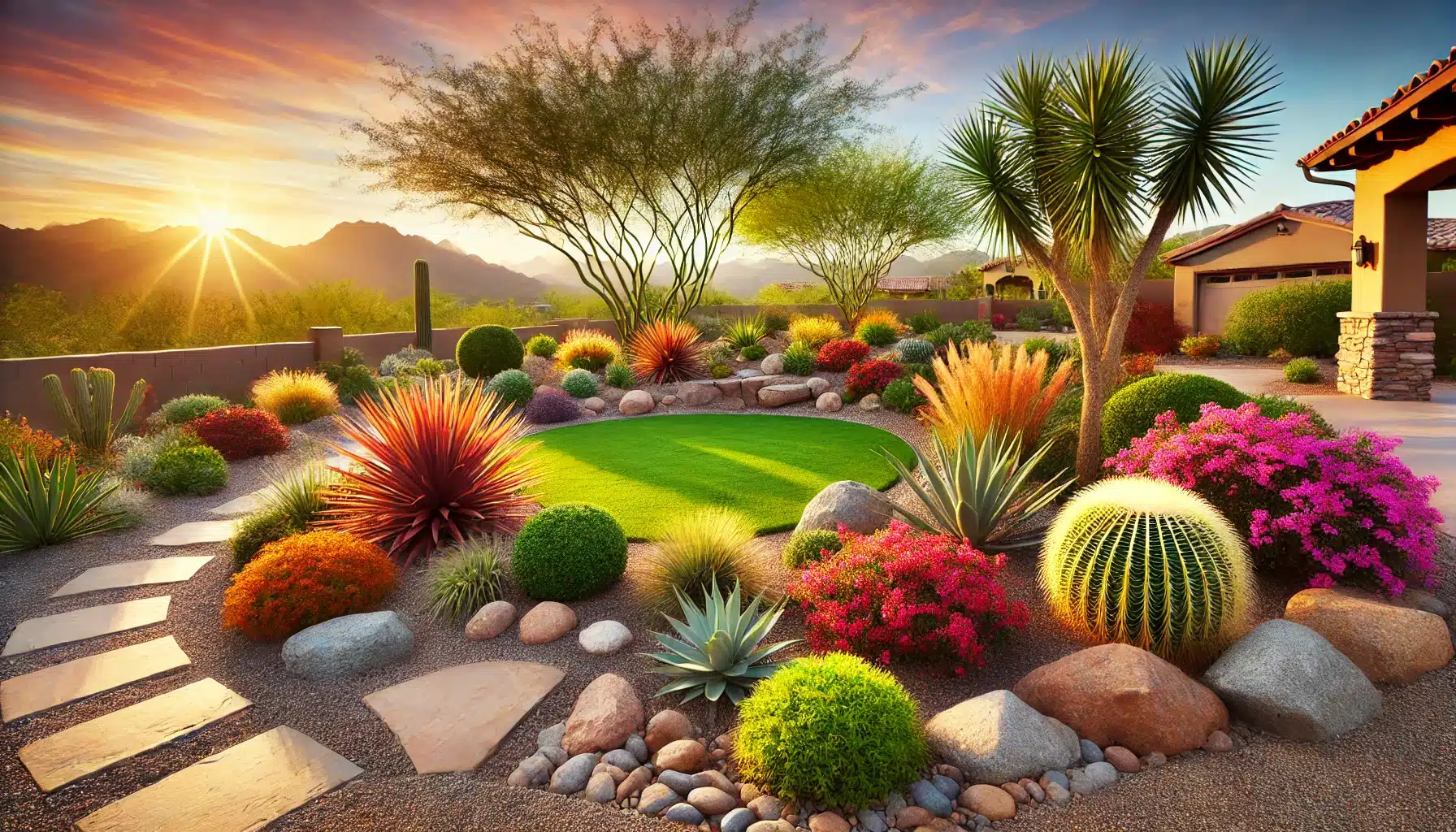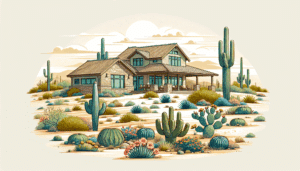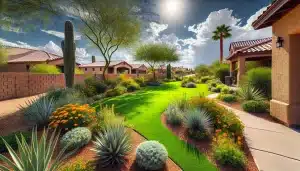Creating a beautiful and functional landscape is more than just planting a few flowers and laying down some grass. Good landscape design requires a thoughtful approach to aesthetics, functionality, and sustainability. At Red Mountain Landscaping, we believe that every homeowner deserves a yard that is both stunning and practical. Here are five essential qualities of good landscape design to help you transform your outdoor space.
Contents
1. Aesthetic Appeal
Balance and Harmony
A well-designed landscape should have a sense of balance and harmony. This doesn’t necessarily mean that everything needs to be symmetrical, but there should be a visual equilibrium. This can be achieved through:
- Symmetrical Balance: Both sides of the landscape are mirror images.
- Asymmetrical Balance: Different elements that have equal visual weight.
- Radial Balance: Elements radiate from a central point.
Color and Texture
Using a variety of colors and textures can make your landscape more interesting and visually appealing. Consider:
- Complementary Colors: Use colors opposite each other on the color wheel for contrast.
- Analogous Colors: Use colors next to each other for a more harmonious look.
- Texture: Combine different textures to add depth and interest. For example, pair soft grasses with rough stone pathways.
Focal Points
Every good landscape design includes focal points that draw the eye. These can be:
- Water Features: Ponds, fountains, or waterfalls.
- Statues or Sculptures: Artistic elements that stand out.
- Specimen Plants: Unique or particularly beautiful plants.
2. Functionality
Outdoor Living Spaces
A functional landscape extends your living space outdoors, providing areas for relaxation, entertainment, and activities. Consider including:
- Patios and Decks: Provide space for outdoor furniture and gatherings.
- Outdoor Kitchens: Ideal for those who love to cook and entertain outdoors.
- Fire Pits or Fireplaces: Create a cozy spot for evening gatherings.
Traffic Flow
Designing clear and logical pathways is essential for a functional landscape. Paths should be:
- Direct: Leading visitors smoothly from one area to another.
- Safe: With non-slip surfaces and adequate lighting.
- Aesthetic: Enhancing the overall design of the landscape.
Storage Solutions
Practical landscapes include convenient storage solutions for tools, equipment, and outdoor toys. Options include:
- Sheds: For larger equipment and tools.
- Storage Benches: Dual-purpose seating and storage.
- Hidden Storage: Built into retaining walls or under decks.
3. Sustainability
Water Conservation
In Arizona, water conservation is critical. Good landscape design incorporates:
- Drought-Resistant Plants: Native plants that require less water.
- Efficient Irrigation Systems: Drip irrigation and smart controllers.
- Rainwater Harvesting: Collecting and reusing rainwater.
Soil Health
Healthy soil is the foundation of a sustainable landscape. Practices include:
- Composting: Adding organic matter to enrich the soil.
- Mulching: Retaining moisture and suppressing weeds.
- Soil Testing: Ensuring the right pH and nutrient levels.
Wildlife Support
Sustainable landscapes support local wildlife by providing:
- Habitat: Planting native species that offer food and shelter.
- Water Sources: Birdbaths or small ponds.
- Pollinator Gardens: Attracting bees, butterflies, and other pollinators.
4. Low Maintenance
Plant Selection
Choosing low-maintenance plants can save time and effort. Look for:
- Native Plants: Adapted to the local climate and conditions.
- Perennials: Long-lasting and require less replanting.
- Evergreens: Provide year-round interest with minimal care.
Automated Systems
Incorporate technology to reduce maintenance tasks, such as:
- Automatic Irrigation: Timed watering systems.
- Smart Lighting: Motion-sensor or programmable outdoor lights.
- Robotic Mowers: For effortless lawn care.
Design Simplicity
A simple, clean design can be easier to maintain than a more complex one. Consider:
- Less Lawn: Replacing some grass with ground covers or hardscaping.
- Fewer Flower Beds: Larger, consolidated beds instead of many small ones.
- Minimalist Decor: Using fewer but more impactful decorative elements.
5. Seasonal Interest
Year-Round Beauty
A good landscape design ensures your yard looks beautiful in every season. Strategies include:
- Evergreens: For winter greenery.
- Flowering Plants: Choosing varieties that bloom at different times.
- Fall Foliage: Plants with colorful autumn leaves.
Seasonal Activities
Designing for seasonal activities can enhance your enjoyment of the landscape throughout the year. Consider:
- Spring Gardens: Bulbs and early bloomers.
- Summer Shade: Trees and pergolas for cooling shade.
- Winter Hardscaping: Features that remain attractive even when plants are dormant.
Lighting
Outdoor lighting can enhance your landscape’s beauty and functionality at night. Types of lighting include:
- Path Lights: Ensuring safe navigation.
- Uplights: Highlighting trees or architectural features.
- String Lights: Adding a festive touch to outdoor areas.
Conclusion
Good landscape design combines aesthetic appeal, functionality, sustainability, low maintenance, and seasonal interest to create a yard that you can enjoy year-round. Whether you’re starting from scratch or looking to improve your existing landscape, Red Mountain Landscaping can help you achieve your vision. Request a Free Quote today to get started on transforming your outdoor space into a stunning and practical oasis.




